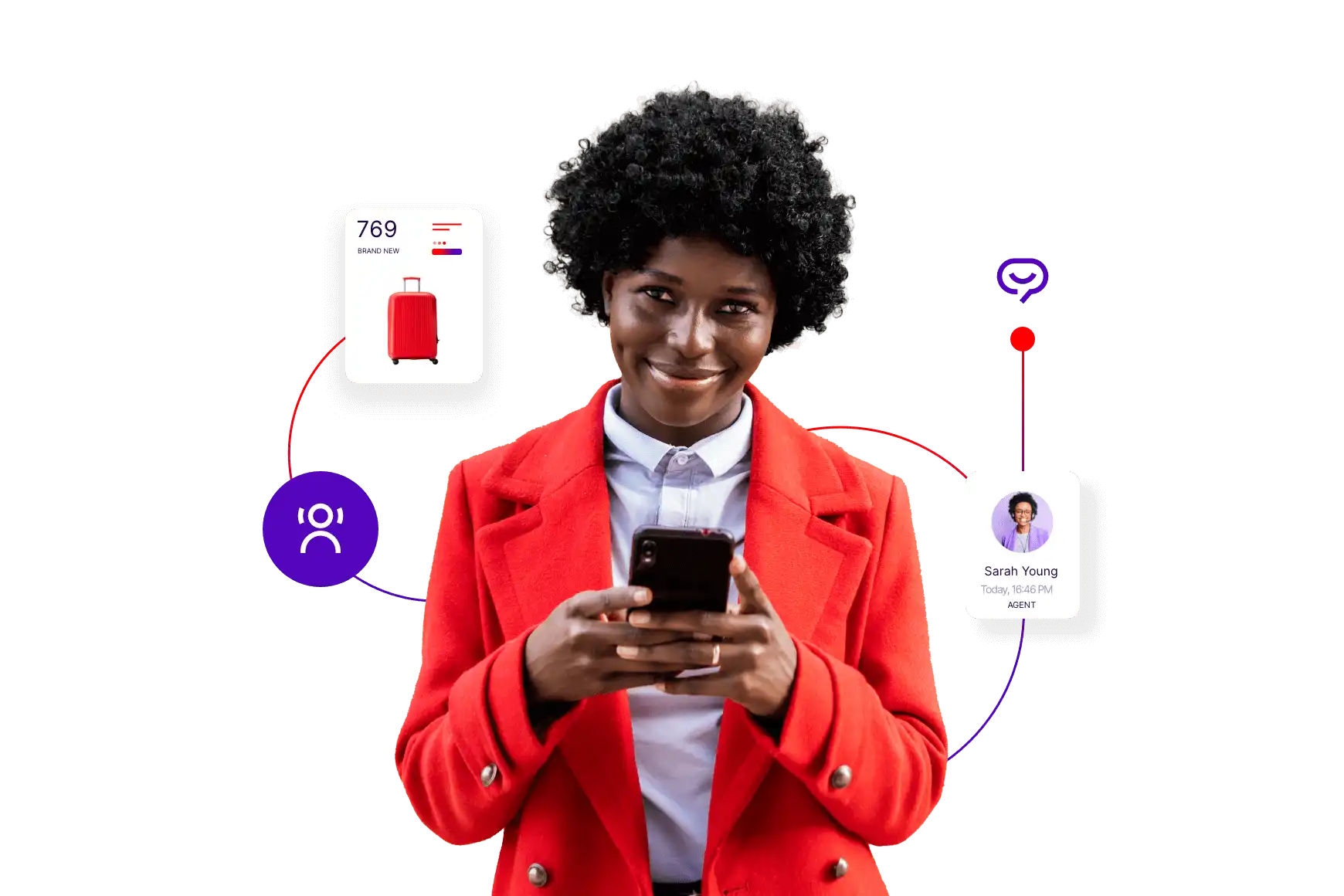How to instill a true partnership mentality in the retail provider community

By Vicki Cantrell
0 min read

In today’s empathy economy, it’s more important than ever to live out great partnerships across a company’s entire ecosystem—this includes the retail contact center technology provider community.
In a recent episode of VIP Insight Series (a collection of conversations with leaders of partnership solutions for the retail community), I had the opportunity to talk with a Talkdesk executive about valuable tips on how industry leaders can achieve a true partnership mentality—for internal teams, but also in the broader retail ecosystem.
The discussion detailed a wide range of actionable insights, including:
- How to crowdsource a customer-obsessed culture.
- What easy-to-use strategies can instill empathy and build a common purpose.
- Why merging the buyer and customer journey ensures functional alignment.

Crowdsourcing for culture.
Company culture is the soil in which the seeds of any great partnership can grow and thrive. And that begins in the hearts and minds of the people you employ. The single biggest decision any leader can make is who to hire. Look for life behind the eyes—that’s a strategy embraced at Talkdesk.
But it’s one thing to talk about it, and quite another to actually live out great partnerships. Once you have the right professionals on the team and they are in the right headspace, the challenge becomes how to best demonstrate that engaged culture to retail partners every day.
Crowdsourcing is a fantastic tool that Talkdesk uses to corral the best ideas about culture from its team members. The company recently convened a client services workshop and gave employees the opportunity to articulate which type of behaviors they want to embody in their work and put forward in their interactions with customers.
To structure these sessions, Talkdesk turned to a leadership paradigm focused on helping organizations engage their employees and build a culture aimed at standout customer experiences: the award-winning red shoes living philosophy.
This framework relies on five guiding principles for developing a highly engaged and meaningful culture:
- Awareness: Be aware and cognizant of your environment.
- Gratitude: Demonstrate gratitude in front of partners, suppliers, and clients each day.
- Everyone has a story: Be human, and recognize the same in others.
- Respect and kindness: Treat people how you would like to be treated.
- Put yourself out there: Go beyond the boundary of what’s expected.
The crowdsourcing sessions gave Talkdesk valuable input on how its professionals strive to embody these five principles in their work each day.
Empathy for a common purpose.
Part of hiring for the “light behind the eyes” (and customer obsession in the heart) is looking for people who have a strong ability to instill empathy into their experiences with retail partners and clients. The pandemic has laid bare that we are all interconnected and going through a shared experience. Nowadays more than ever, empathy brings great solidarity to a partnership relationship and also great shared purpose.
When faced with partnership conversations or customer interactions, Talkdesk leaders leverage two valuable strategies to encourage empathetic work practices. The first is called “share the pen.” The idea is that instead of considering a situation as two separate entities across the table, you conceptualize it as if there were a single pen being passed back and forth to write the same script. It’s an approach that brings a fundamentally different attitude to the whole exercise and the entire experience.
A second approach is called “channeling the chair.” This essentially means putting yourself in the other person’s shoes. Every email or presentation should be read from the recipient’s perspective, ignoring one’s own specific role and agenda. It’s a completely different way for people to audit themselves and hold themselves accountable for exhibiting empathy.
Functional alignment across a single journey.
These strategies may seem intuitive when it comes to vendors or contact center solution providers understanding the needs of retailers and customers. But for there to be a truly empathetic partnership, it’s just as critical for customers and retailers to understand the needs of their vendors. If both sides are going to “share the pen,” both sides need to understand the challenges faced on each side of the table.
At most companies, there are two distinct journeys that occur before and after “yes.” Talkdesk, on the other hand, maps the journey out differently, as an infinite loop that combines the buyer and customer into one, singular journey.
When you walk into a meeting, especially early on in a relationship, you certainly are thrilled to have the meeting on both sides, but you are coming with your own agenda, and the way that Talkdesk highlights not just ‘share the pen,’ but also how to read emails are specific actions that people can really use.
The process initiates with the first marketing contact to a prospective customer, continues through post-sales cycles of purchasing and repurchasing, and eventually develops real brand loyalty. Everything is aligned along one cross-functional journey, where there are multiple paths for each person to move forward individually.
It’s important to lead on the front foot but work in concert across one journey, not two. Talkdesk has three key tools for ensuring functional alignment in this process:
The RACI model. At each step of the journey, it’s important for everyone to know who are the leading actors and who are the supporting cast. The RACI model defines who is responsible, accountable, consulted, and informed for each segment. Getting everyone on the same page makes processes more efficient and goes a long way toward avoiding confusion.
Governance. Talkdesk thinks of governance as a means of enforcing the tried-and-true principles that it wants to demonstrate in the customer experience. It’s also a way to take stock of the company’s execution and hold each other mutually accountable.
Advisory Councils. Talkdesk brings in various people from around the company’s ecosystem, as well as from its customer base, to get a status check on how its performance is lining up with its ideal customer experience. This input is used to refine the process.
In all of these aspects, ensuring you’re speaking the same language with your partners is an essential part of the conversation. When you are talking about who’s responsible, who’s consulted, etc., there’s a fair amount of making sure you’re all operating from the same dictionary.
By combining the buyer and customer journey into a single loop, verifying roles are well defined under the RACI model and using governance and advisory councils to maintain functional alignment, Talkdesk ensures that everyone feels like they are on the same team and retail customers receive a frictionless, elegant experience.
For further insights, check the Talkdesk ebook on retail agent experience improvement through automation and AI.
This blog was written in partnership with Vendors in Partnership Awards.








